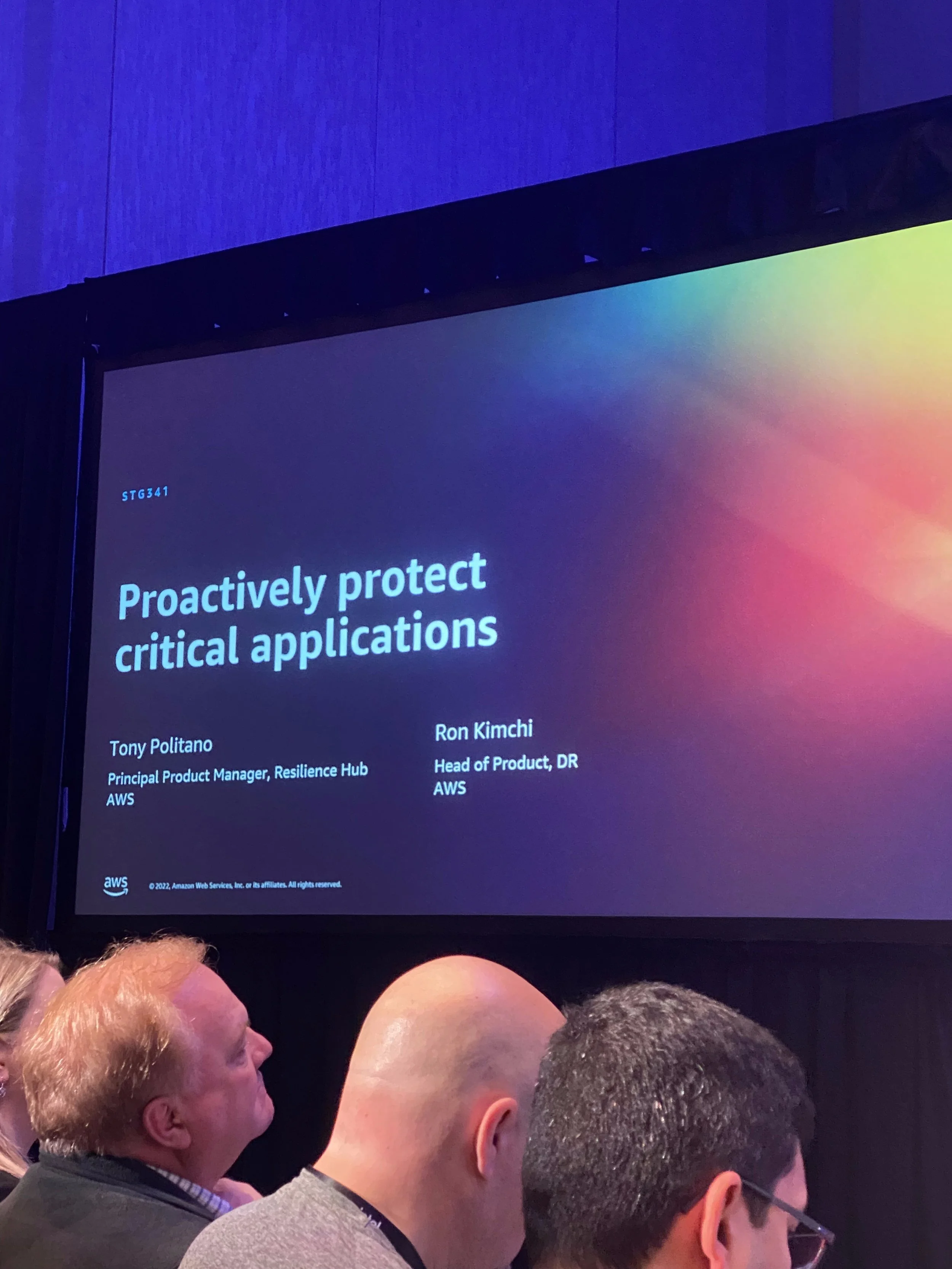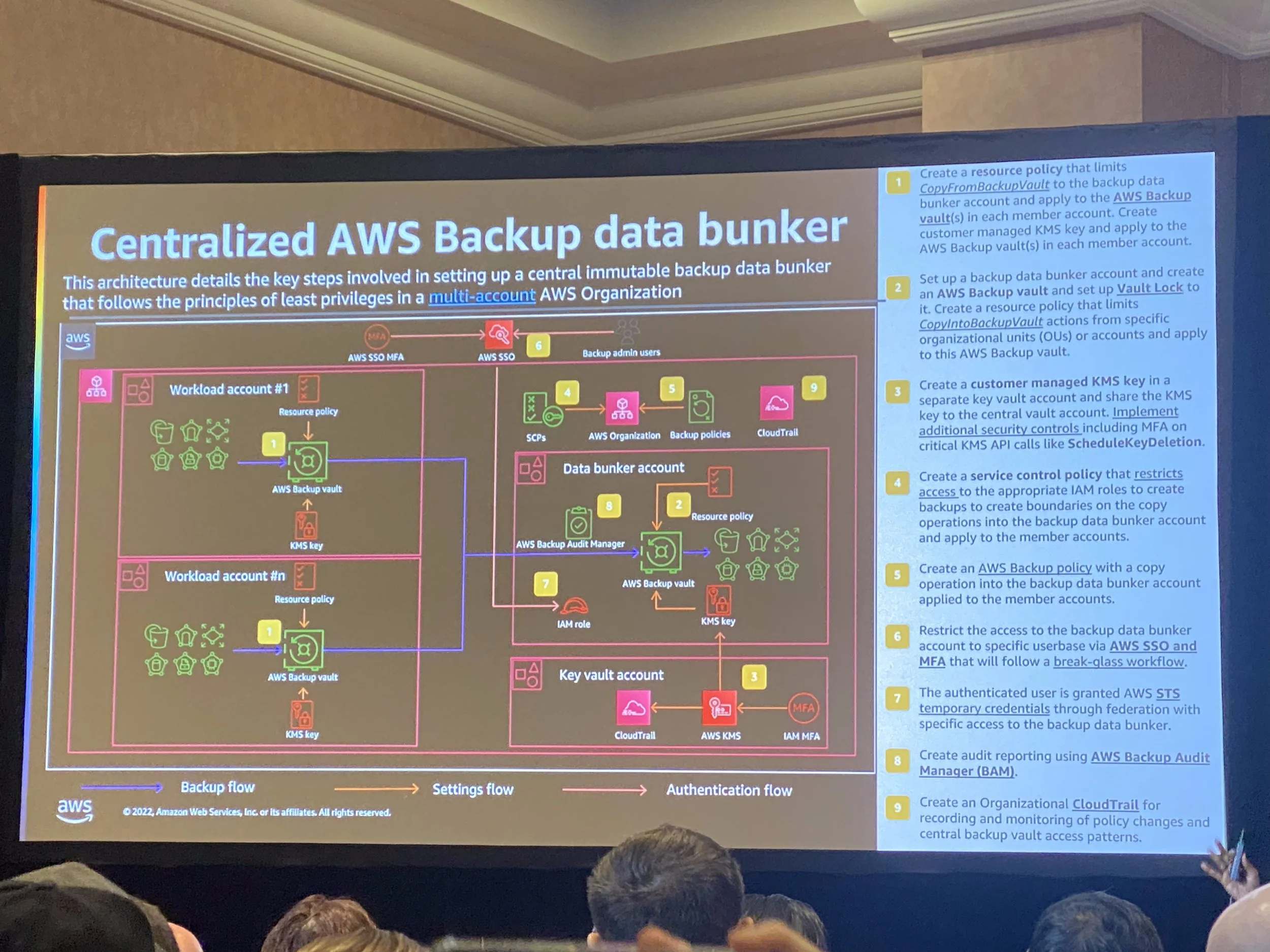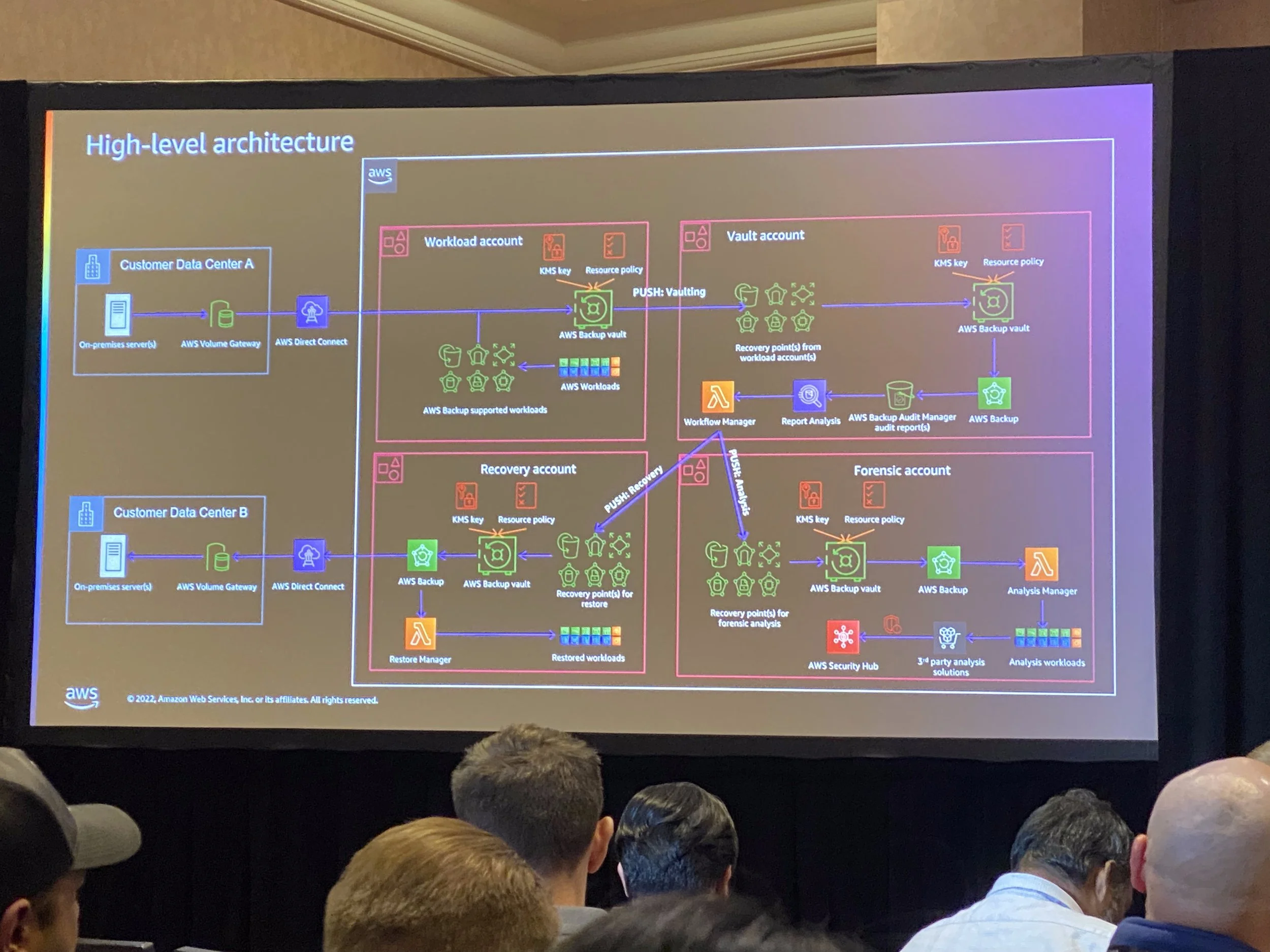Summery from AWS re:invent
This blog is our reflextion of AWS re:invent 2022 in Las Vegas.
First of all, I just want to say, wow what a event and I though IBM Think was a large event but that is nothing comparing with AWS re:invent.
And the opportunity to meet so many end-users, partners and AWS people at the same time was really good, and after the pandemic this was really good.
The only “bad thing” with the event it that, it was so large so I missed a couple of the keynotes speaker because it was so many sessions that I want to go to.
Our mission from IssTech was clear when we went over to Las Vegas to understand how can we protect the cloud and how can we make sure we protect against ransomware.
We went to multiple sessions from multiple vendors and everyone has the same view, ransomware was the key focus from any vendor, and I think all of the had a interesting approach and we all know ransomware is not a easy task from a backup perspective.
Druva, Rubrik, Cohesity, Veeam, AWS and other vendors all spoke about how to protect and be able to recover all data, no one really spoke about how to restore from a ransomware attack except for Druva and AWS where Druva showed a recorded video and AWS did a whiteboard session.
I really like the concept where AWS re:invent had 100,200,300 and 400 sessions where 100 means basic overview and 400 deep dive technical hands-on labs.
Most of the sessions we went to was 300 and 400 sessions to understand how the products was working, but unfortunately didn’t all vendors have that oppertunities.
What does AWS Provide
First of all, if you are going to use AWS native tools you need to understand there is 2 different backup tools they provide, AWS Backup and AWS Elastic Disaster Recovery and both of them has its pro and cons.
AWS Elastic Disaster Recovery
If you ever been working with Norton Ghost back in the 90ist, you will quickly understand how this product are working.
ou are literately creating a ghost copy of your machine from one AWS region to another region.
When you change a block on your source side you will get the same change on the other side.
This is a great way to lower your RTO (Restore Time Objective) and get shorter RPO (Restore Point Objective), but from a ransomware perspective this is probably not the best solution.
AWS Backup
AWS Backup on the other hand has a different approach where it looks more like a traditional VM backup like VEEAM, Rubrik, IBM Spectrum Protect or any other products that backup VMware, accept that it does create a crash consistent snapshot and then archive that to a S3 Backup that are controlled by AWS Backup.
In this way can you have the data much longer retention period, but the RPO (Restore Point Objective) and RTO (Restore Time Objective) is not that good as AWS Elastic Disaster Recovery.
Another great function that AWS backup has it the bunker account where you can create a S3 Bucket that has immutable storage, and you can have a totally different IAM so no one can delete or access your backups, so in case of a disaster this one or few accounts are the only one that has access to your data.
Other things that we really like about AWS Backup is that they already ready for the next generation Backup buzz word, “Backup-as-Code”. That basically mean that, if you are an organization that are using Terraform/Cloud Foundation or any other Infrastructure-as-Code platform, you can then include the backup part of your code, and you can control, configure and manage your entire Backup/Restore/Diaster Recovery and documentation by using a code.
Backup-as-Code
By using Backup-as-Code with your bunker account, you can then automate 1000s of recovery test daily using Lambda or any other similar CI/CD tools like Jenkins.
This is really cool and the future of Disaster Recovery.
Other things that AWS Backup is better then AWS Elastic Recovery was the supported platforms where AWS Backup supported almost every single AWS components except EKS, but you can now protect SAP Hana on EC2 instance and S3 Buckets. And later on will we at IssTech create a blog that shows how you can do a Application Aware backup of Microsoft SQL running on EC2, so please subscribe on our blogs to get the latest news.
Druva
Other presentation that was very impressive was Druva, where they showed a video how to protect AWS resources, Identify the malware infected files and do restore all resources but exclude the infected files and take the last known good file instead.
Another great part that I sow in there booth was that you can also backup your other SaaS applications like Microsoft 365 and Google Workspace environment with the same UI as you protect all your AWS resources.
If you want a more detailed version from AWS re:invent or need more information about AWS Backup / AWS Elastic Disaster Recovery or any other tools like Druva / IBM Spectrum Protect Family or Rubrik. Drop us an email.
AWS re:invent 2023
Will we go next year to AWS re:invent? Yes we will guarantee go next year again.
Happy Holiday
IssTech





